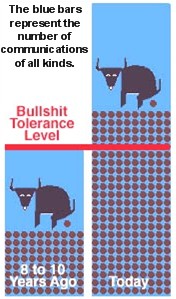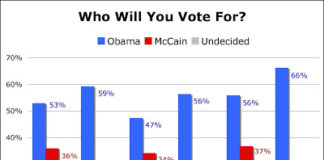Public Relations (PR) is not just for managing a company’s image and for damage control. It’s also used as an adjunct to marketing products and sometimes the distinction is blurred.
PR is used by the pharmaceutical industry to:
- Improve the industry’s reputation
- Improve a pharma company’s reputation
- “Clearly Displaying” — ie, promoting — a Product’s Purpose, Benefits and Value
- “Earning” — ie, buying — Media Coverage For Your Health Story
- “Development of a Public Education Campaign to Increase Awareness,” most often of a “medical condition” for which a drug is indicated
- Buttress the “Value of [a company’s] Pipeline” — ie, generate investor interest in the company’s stock
- Aid lobbying efforts (“An Integral And Necessary Part Of The Lobbying Mix”) — ie, debunk or promote social programs and legislative actions that will affect the drug industry (eg. Medicare, Consumer Directed Healthcare)
- Boost employee morale
- Last but not least, Manage a crisis — eg, Merck spent about $52 million in 2005 on non-product, image advertising in its “Putting Patients First” PR campaign (see “Patients Come First?“)
I compiled this list based on presentations planned for an upcoming industry conference (“2nd Annual Pharmaceutical PR & Communications Summit”), the tagline of which summarizes the three main functions of PR in the pharmaceutical industry: “Enhancing Corporate, Brand and Industry Value.” Enhancing brand value is actually what marketing is all about.
This is quite a long list of roles that is guaranteed to keep Pharma PR professionals and agencies flush. One of these professionals, Ilyssa Levins, president of HCIL Consulting, wrote a “PR View” column in this month’s Medical Marketing & Media magazine. In her column, Levins asks and answers the question: “Why should marketers allocate more help-seeking DTC spending to PR?”
According to the Pharma Marketing Glossary, “Help-seeking ads are communications disseminated to consumers or health care practitioners that discuss a particular disease or health condition, but do not mention any specific drug or device or make any representation or suggestion concerning a particular drug or device.” These ads are also known as unbranded or disease awareness ads.
Ratchet Up the BS
Because help-seeking ads do not mention a drug by name, they are not nearly as closely regulated by the FDA as are branded ads. Hence, it is possible to ratchet up the bullshit level…and that’s where the PR folks come in.
 I use the term “bullshit” in a technical, not in a derogatory, sense (see “Is Pharmaceutical Marketing BS?” for what I mean).
I use the term “bullshit” in a technical, not in a derogatory, sense (see “Is Pharmaceutical Marketing BS?” for what I mean).
PR is one form of communication used to reach consumers and physicians. It generates a lot of messages. Unfortunately, it also adds to the BS level. As I have said before, pharma customers — patients and physicians — can only take so much bullshit. If the level rises too high (see diagram), our bullshit tolerance is exceeded and could result in negative feedback.
One example of this is disease awareness ads and news stories that promote a new medical condition almost no one has heard of before. Restless leg syndrome is a case in point. I’ve written on this topic before (see “Restless Pharma Marketing“). Is this a “medical condition” or is it a normal symptom of aging that can be handled by lifestyle changes? Clearly, the role of PR is to plant the former idea in our minds, not the latter.
The erectile dysfunction (ED) drug marketing arena has had its share of bullshit. Recently, Viagra and other ED drug ads have returned to TV in the guise of disease awareness ads that link ED to hypertension, diabetes, and high cholesterol. The TV ads have only 60 seconds to do this. Who believes pharmaceutical company ads anyway? It would be much better to have a trusted “independent” third party source talk about the connection. Especially impressive would be an article devoted to the subject in a major media publication like the Wall Street Journal.
Just today, I came across the article “Doctors can use the ‘Viagra visit’ to screen men for heart disease” [subscription required] in the Health Matters column of a special section of the WSJ. Quite a nice placement for Viagra, I thought. It has all the signs of a successful PR campaign that fits hand in glove with the disease awareness advertising campaign, the purpose of which is to broaden the use of ED drugs to a much larger segment of the male population thereby boosting limp ED drug sales (for more on that, see “Blockbuster or Ballbuster?“).
The premise of the “viagra Visit” article is that “erectile function” is an early-warning signal for heart attacks and stroke! Like a little, limp bird in a coal mine. This is based on some evidence, which I can only assume is credible — it is, after all, cited in the WSJ, a publication I always take at face value and one whose every word I believe ;-).
The idea is that doctors should screen men for high blood pressure, high blood sugar, and high cholesterol when they come in asking for Viagra (or Levitra or Cialis). The connection between high BP and ED seems the most direct and logical. Perhaps the thinking is that these guys have never visited a doctor’s office before and never had their BPs measured. Unlikely.
The interesting part of the story is the suggestion that men who respond to Viagra — not all do — may have undetected clogged arteries not only in the penis, but also in the heart. Or at least, the penile clogs may presage the cardiac clogs.
Anyway, Levins — the PR professional I mentioned above — says that a mere $4 million to $6 million PR campaign (“a drop in the proverbial bucket for a DTC advertising budget”) delivers a “significant level of disease-state media relations…”
I wonder how much $ went into the WSJ “Viagra Visit” article? [Although the article mentions other drugs, Viagra, as the market leader, benefits the most.]
The problem is that we will never know. There is very little transparency let alone regulation of pharmaceutical marketing that disguises itself as PR. Marketers may push the envelope, but PR people are way out of the envelope! Marketers take the heat, but PR people coolly ply their trade away from public scrutiny, IMHO.









![6 Digital Tools at the Center of Healthcare Digitalization [INFOGRAPHIC]](http://ec2-54-175-84-28.compute-1.amazonaws.com/pharma-mkting.com/wp-content/uploads/2021/04/6DigitalTools_600px-100x70.jpg)




